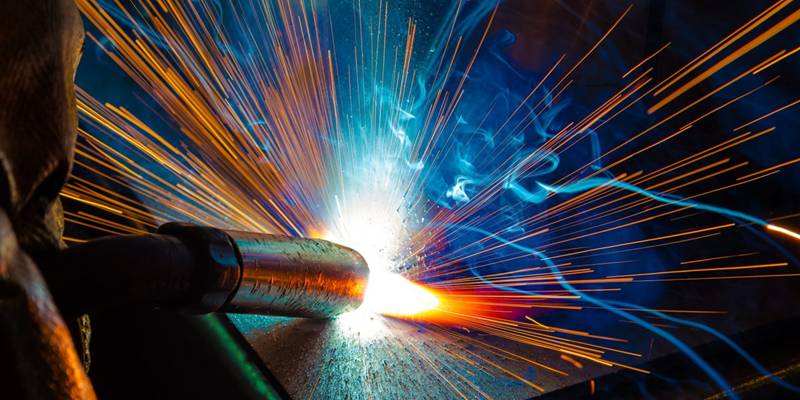The Ultimate Guide to Welding WPS Procedures: A Comprehensive Overview for Welders
In the detailed globe of welding, Welding Procedure Specifications (WPS) serve as the foundation of ensuring high quality, uniformity, and security in welding procedures (welding WPS). As we dig right into the different elements of a WPS and discover the intricacies of certification and certification, we will reveal the vital role these treatments play in the realm of welding.
Value of WPS Procedures
Comprehending the importance of Welding Procedure Specifications (WPS) treatments is vital for making sure the high quality and stability of welded frameworks. WPS procedures act as a roadmap for welders, detailing the needed steps, parameters, and products needed to attain a sound weld. By sticking to WPS guidelines, welders can ensure uniformity in their job, resulting in structurally sound and trustworthy welds.
One of the key reasons that WPS treatments are vital is their duty in preserving weld high quality and integrity. Following the specified welding parameters and strategies laid out in the WPS assists protect against flaws such as porosity, fracturing, or incomplete combination, which can jeopardize the strength and longevity of the weld. Furthermore, WPS procedures are important for making certain compliance with sector standards and codes. By adhering to well-known WPS guidelines, welders can show that their job fulfills the needed needs for security and top quality, supplying assurance to customers, inspectors, and regulatory bodies. In essence, the significance of WPS procedures can not be overemphasized, as they are fundamental to achieving regular, top notch welds that satisfy sector standards and requirements.

Components of a WPS
A Welding Treatment Requirements (WPS) normally makes up essential parts that information the certain needs for executing a weld, ensuring uniformity and high quality in the welding process. The key components of a WPS consist of vital variables such as base steels, filler steels, preheat and interpass temperature levels, welding procedures, shielding gases, welding settings, and post-weld heat treatment needs.
Base steels describe the materials being signed up with, while filler metals are utilized to fill the void in between the base metals throughout welding. Preheat and interpass temperature levels are crucial for managing the warm input and stopping issues like fracturing or distortion. The welding procedure lays out the specific method to be used, whether it's gas metal arc welding (GMAW), protected metal arc welding (SMAW), or another technique. Protecting gases safeguard the weld swimming pool from atmospheric contamination. Welding positions specify the orientations in which welding can be done. Post-weld warmth treatment might be necessary to soothe stresses and enhance the weld's homes. A detailed understanding of these elements is vital for creating a effective and extensive WPS.

Certification and Certification
Having actually developed the essential parts of a Welding Procedure Spec (WPS), the focus currently moves in the direction of the crucial elements of certification and accreditation in welding methods.

Certification, on the other hand, is the official acknowledgment of a welder's certifications by an appropriate certification body or company. Welding certifications are generally based on the particular welding procedures, products, and positions a welder is qualified to collaborate with. Holding a valid welding qualification demonstrates that a welder satisfies industry standards and is qualified to perform welding tasks to the useful content needed requirements.
Creating a WPS
To create a Welding Treatment Specification (WPS) that meets market requirements, mindful consideration of welding processes, materials, and functional criteria is essential. The very first step in creating a WPS is to identify the welding procedure to be made use of, such as gas metal arc welding (GMAW) or secured steel arc welding (SMAW)

Applying and Keeping An Eye On WPS
Upon finalizing the thorough Welding Treatment Specification (WPS) that meticulously details welding processes, materials, functional specifications, and quality control measures, the emphasis moves to successfully executing and monitoring the established treatments. Execution involves guaranteeing that all welders involved in the job recognize with the WPS and follow it meticulously throughout the welding procedure. This calls for supplying appropriate training and supervision to assure adherence to the specified procedures. Keeping an eye on the WPS entails continuous oversight to validate that welding tasks align with the recorded specifications. Evaluations, testing, and high quality control steps are crucial elements of the monitoring process to recognize any kind of issues or discrepancies quickly. Normal audits and evaluations of the welding procedures aid in maintaining uniformity and top quality throughout the task. Effective implementation and tracking of the WPS are critical for guaranteeing the stability, toughness, and security of the bonded joints, ultimately contributing to the overall success of the welding task.
Final Thought
To conclude, understanding and following Welding Treatment Specifications (WPS) is vital for welders to ensure high quality, uniformity, and security in their job. By check my site understanding the elements of a WPS, getting appropriate credentials and qualifications, producing thorough treatments, and executing and checking them efficiently, welders can improve their abilities and efficiency in welding practices. Following WPS procedures is necessary for creating premium welds and conference sector requirements.
In the elaborate globe of welding, Welding Treatment Specs (WPS) offer as the foundation of guaranteeing high quality, consistency, and security in welding operations. The welding procedure outlines the certain strategy to be utilized, whether it's gas steel arc welding (GMAW), secured metal arc welding (SMAW), or another approach.To create a Welding Procedure Requirements (WPS) that meets market requirements, Homepage cautious factor to consider of welding processes, products, and operational parameters is important. The first step in creating a WPS is to identify the welding procedure to be made use of, such as gas steel arc welding (GMAW) or secured steel arc welding (SMAW)Upon finalizing the detailed Welding Treatment Spec (WPS) that carefully details welding procedures, products, functional criteria, and top quality guarantee steps, the focus moves to effectively implementing and keeping track of the recognized procedures.